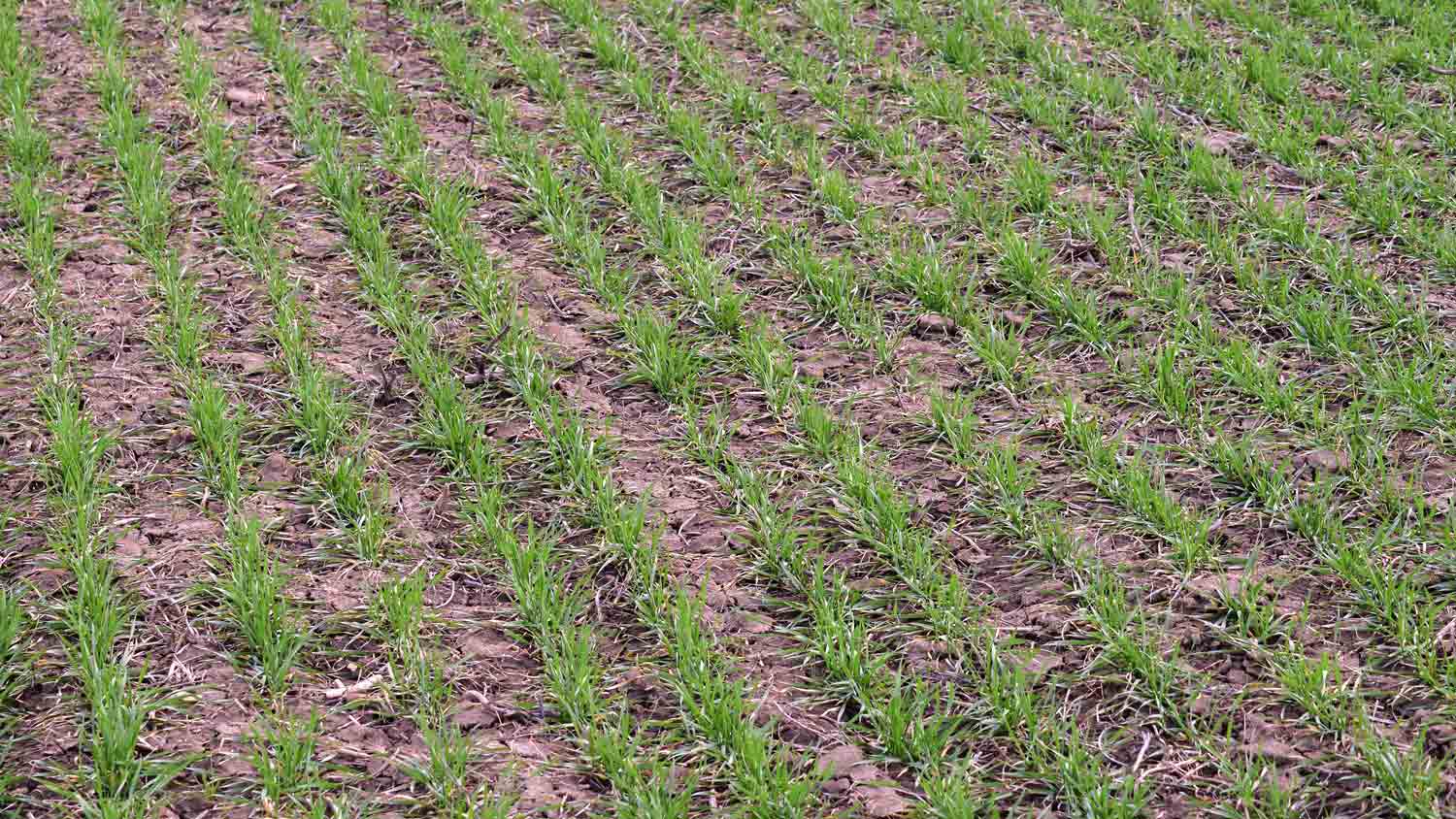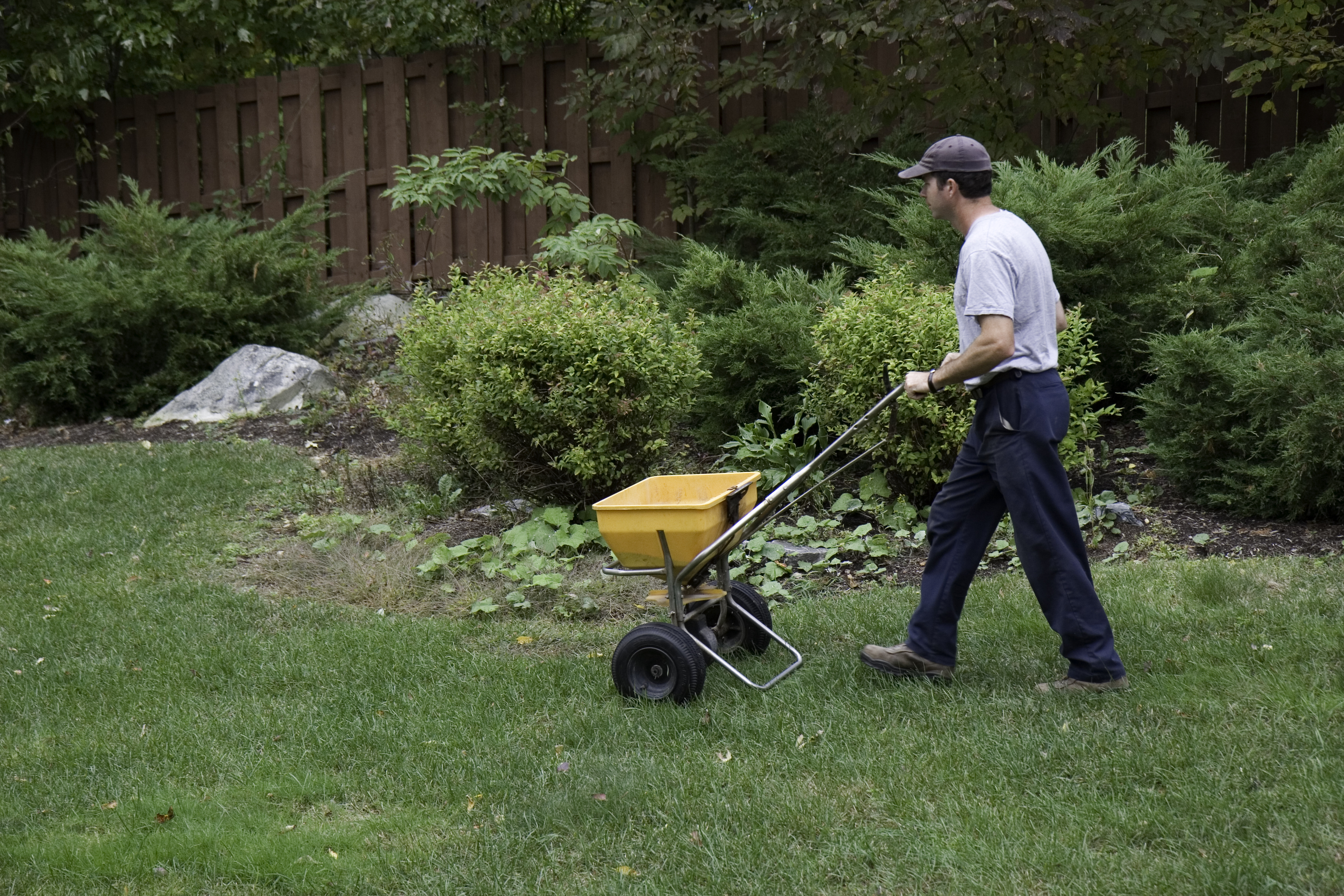
Discover the cost to fertilize your lawn, including average prices, key factors, and tips to help homeowners budget for a lush, healthy yard.
Power seeding costs average $975 to $1,960, with most homeowners spending $1,470. Main cost factors include lawn size, seed type, labor, and site conditions.


Power seeding costs $0.09 to $0.18 per square foot, and lawn size, seed type, and soil prep are key cost drivers.
Overseeding is the most budget-friendly power seeding method, ranging from $0.04 to $0.08 per square foot.
Professional labor costs $35 to $80 per hour and ensures even coverage and optimal results.
A basic seed blend that works in cool or warm seasons averages $3 to $10 per pound.
This article was created using automation technology and thoroughly fact-checked and edited by an Angi Editor in accordance with our AI policy.
On average, power seeding costs $975 to $1,960, with an average price of $1,470, depending on lawn size, seed type, and site prep needs. Homeowners can expect to pay $0.09 to $0.18 per square foot for professional power seeding services. Understanding these costs helps you plan for a lush, healthy lawn.
Let’s explore what drives these costs, what to expect from the process, and how to make the most of your investment in a greener yard.
Knowing what impacts your power seeding cost helps you budget wisely and get the results you want. Let’s break down the main variables that affect pricing.
The method you choose for power seeding can make a noticeable difference in both results and cost. Standard power seeding uses specialized equipment to plant seed directly into the soil. Overseeding, a lighter approach, spreads seed over an existing lawn without soil disruption. More advanced techniques, like hydroseeding, can increase cost but improve coverage.
Some methods work better for new lawns, while others are best for renovating an existing yard. Renovations may require more preparation, which adds to the overall cost.
| Type | Description | Average Cost per Sq. Ft. |
|---|---|---|
| Power seeding | Single-pass machine seeding for established lawns | $0.09–$0.18 |
| Overseeding | Broadcast seeding without soil disturbance | $0.04–$0.08 |
| Hydroseeding | Sprays slurry mixture to distribute | $0.07–$0.22 |
Lawn size is a primary factor in your total power seeding cost. The larger your yard, the more seed, labor, and equipment time required. Most companies have minimum service charges for small lawns, while large properties may qualify for volume discounts.
| Lawn Size (Sq. Ft.) | Average Cost |
|---|---|
| 5,000 | $450–$900 |
| 7,000 | $630–$1,260 |
| 10,000 | $900–$1,800 |
| 15,000 | $1,350–$2,700 |
| 20,000 | $1,800–$3,600 |
How often you power seed your lawn can influence cost and long-term results. Many homeowners opt for annual or biennial power seeding to maintain thick, resilient grass. One-time seeding is common for new lawns or major repairs, but recurring service packages may offer lower per-visit pricing.
Some lawn care companies provide discounts for repeat customers or when bundling power seeding with other maintenance services. This can help reduce your cost over time, especially if you commit to regular treatments.

The type of grass seed and additional materials used play a big role in your total expense. Cool-season grasses like Kentucky bluegrass or fescue may cost less than warm-season or specialty blends. Premium, drought-resistant, or custom seed mixtures add to the price but offer long-term benefits in durability and water savings.
Other material costs include starter fertilizer, soil amendments like compost, and mulch. These additives help promote healthy seed germination and stronger root systems.
| Material Type | Description | Average Cost |
|---|---|---|
| Basic seed blend | Standard cool- or warm-season mix | $3–$10 per pound |
| Premium/drought-resistant seed | High-end or specialty grass types | $10–$20 per pound |
| Starter fertilizer | Encourages germination and early growth | $1–$2.50 per pound |
| Compost | Nutrients for soil health | $20–$50 per cubic yard |
| Mulch/topdressing | Light layer to protect new seed | $50–$100 per cubic yard |
Power seeding is performed by landscaping professionals or lawn care companies. Labor rates range from $35 to $80 per hour, or are bundled into a per-project fee based on lawn size and complexity.
Labor costs increase if your lawn needs extensive site preparation, debris removal, or if you have slopes, tree roots, or intricate landscaping. In busy markets or regions with high demand, labor rates are often higher. Some companies offer flat-rate pricing, while others itemize labor and materials separately.
Where you live affects power seeding cost due to regional differences in labor rates, seed availability, and climate. Urban areas tend to have higher prices due to overhead and demand. The type of soil, growing season length, and ease of access (front yard, backyard, or fenced areas) can all impact your final bill.
Backyards or hard-to-reach spaces may have extra charges due to equipment transport or setup.
Tipping is not required for power seeding, but it’s a thoughtful way to show appreciation for excellent service. Many homeowners offer a tip of 10% to 20% of the total cost or a flat $20 to $50 for larger jobs. Tipping is especially appreciated if the team goes above and beyond, works in challenging conditions, or provides extra care.
If you’re satisfied with the results or received outstanding advice, a tip or positive review is always welcome.
Power seeding is recommended every one to two years to keep your lawn thick and healthy. The best time for power seeding depends on your grass type and climate. For cool-season grasses, early fall is ideal, while late spring works best for warm-season varieties.
Seasonal demand can impact your power seeding cost, with prices often higher during peak months. If your lawn shows bare patches, thinning grass, or heavy foot traffic damage, it’s a sign that power seeding is needed.
Weather and soil conditions also play a role in scheduling. Wet or very dry periods can delay service or require extra preparation, potentially raising costs.

Several add-on services can improve results and address underlying lawn issues, but they do increase your total power seeding cost. Soil testing before seeding helps determine nutrient needs. Lawn aeration, which relieves soil compaction, is often paired with power seeding for better germination.
Topdressing with compost or soil amendments can enhance seed contact and boost soil health. Weed control, either before or after seeding, prevents unwanted competition. Some homeowners opt for follow-up fertilization, watering services, or debris removal to ensure optimal growth.
If you have an irrigation system, a quick check or minor repair may be necessary to support new seed establishment.
Hiring a local lawn seeding pro costs more upfront, but you benefit expertise, equipment, and guaranteed coverage. Pros bring specialized equipment and experience to your lawn care, making the process smooth and saving you money and time in the long run.
Seeding a lawn requires specialized equipment and knowledge. Here are some of the top reasons to work with a pro:
Pros know the right time, technique, and custom seed blends for your climate, soil, and lawn type.
They use commercial-grade equipment, like power seeders, that cut into the soil to ensure better seed-to-soil contact.
Lawn seeding pros use premium seed blends tailored for different conditions to get the higher-level results.
By handling all the details from start to finish, pros increase the likelihood of a lush, thick lawn, saving you from having to re-do the work.
Many lawn seeding pros provide completed services that include soil preparation, seed application, and a tailored maintenance plan.
If you want to take on some aspects of the project yourself, here are a few DIY tasks that can help save time and labor costs:
Mow your grass to an inch or two high and bag the clippings to allow the sun to reach the soil.
Rake the lawn thoroughly and remove loose clippings, fallen leaves, and other debris.
Pick up any rocks, toys, furniture, or other objects from the lawn to provide a clear workspace.
Place flags or markers to clearly indicate the location of sprinkler heads, shallow cables, or invisible fence wires.
Ensure all gates are unlocked so the service team can access the entire lawn.
Looking to save on power seeding costs? Here are practical ways to lower your bill without sacrificing quality:
Schedule power seeding during off-peak seasons when demand and rates are lower.
Prepare your lawn in advance by mowing and removing debris to reduce labor charges.
Select a seed blend suited to your region for better results and fewer costly replacements.
Bundle power seeding with other lawn services, like aeration or fertilization, to unlock package discounts.
Compare quotes from several local lawn seeding pros to find competitive pricing.
Handle simple prep tasks yourself, such as clearing the lawn or basic soil amendments, to cut down on professional labor costs.
Be ready to ask if your soil is compacted and if core aeration is necessary, as power seeding is less effective in compacted soil.
Inquire about the specific grass seed mix that will thrive in the amount of sun or shade your lawn receives.
Ask about starter fertilizer that will support the new seed and ask when it should be applied.
Ask the pro about the ideal timing for your specific grass type to ensure proper germination.
Home is the most important place on earth, which is why Angi has helped more than 150 million homeowners transform their houses into homes they adore. To help homeowners with their next project, Angi provides readers with the most accurate cost data and upholds strict editorial standards. We extensively research project costs to develop the pricing data you see, so you can make the best decisions for you and your home. We rely on reputable sources, including the U.S. Bureau of Labor Statistics, academic journals, market studies, and interviews with industry experts—all to ensure our prices reflect real-world projects.
Want to help us improve our cost data? Send us a recent project quote to [email protected]. Quotes and personal information will not be shared publicly.
From average costs to expert advice, get all the answers you need to get your job done.

Discover the cost to fertilize your lawn, including average prices, key factors, and tips to help homeowners budget for a lush, healthy yard.

Discover average lawn aeration cost, key price factors, and tips to save. Get a clear estimate for your yard and learn how to choose between DIY and hiring a pro.

Discover average hydroseeding cost, key price factors, and ways to save. Get transparent estimates for your lawn project and make informed decisions for your home.

When it comes to drop spreaders versus broadcast spreaders, knowing the differences between them will help you make the right choice for your outdoor setup.

Grass seeds thrive in soil rich in nutrients, but a potting mix will not support your grass’ long-term health. Find out which type of soil is best for grass.

If you’re looking to apply fertilizer to your lawn, there are a few things you need to get right first. Make sure you’re ready to answer these lawn fertilizer questions before you start.